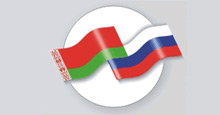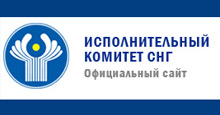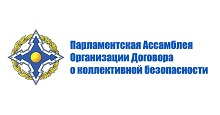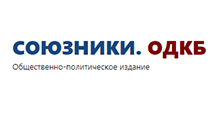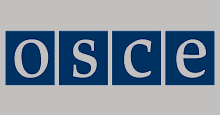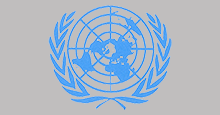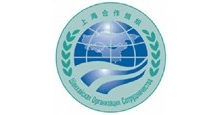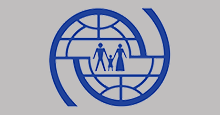We're at the Kharbmaidon training range in the Republic of Tajikistan. The Afghan border is just a few kilometers from here. We watched the active phase of the “Interaction” training. As a journalist, I was struck not only by the fighting power of the units, but also by how well the units from different countries knew how to work together. Can we already sum up some preliminary results of the trainings?
Zas: The results will be summarized a little later, but now we can share our impressions of what has been happening, including today, at the training range. I would like to stress that what we have seen today is only a small part of the work that has been done during the preparation and conduct of the training. After all, the training itself lasted six days and was conducted in two stages. The first stage involved two main issues: organization of a joint operation to localize the armed conflict in the Central Asian region, and training of the subunits and their coordination. The second stage was immediate practical actions to block and destroy invading terrorist groups and illegal armed groups. This is a very important event for us, probably the most important one this year, and it was a comprehensive training: simultaneously maneuvers were conducted at other training grounds, also in the Republic of Tajikistan, by intelligence forces, Acquisition, Technology, and Logistics forces in the interests of using the CRRF.
Among other things, we have seen mass tank refueling, and how units can in a coordinated manner refuel armored vehicles on the battlefield.
Zas: It was a dramatic moment, of course. It was a very important event. It was one of the events that was really practiced at all the ranges in the Republic of Tajikistan. I would like to say one more thing about the importance of these events. Of course, it is very necessary to improve the skills of our troops, especially those that are part of the Collective Forces. We have taken it to a very high level. We have 101 systems for training these units. Their coordination, their joint action effectiveness, their interaction, what was done on the range. Another important component of this training is purely political. With these events, we have tried to show everyone that we are ready to defend the independence, freedom and peace in this land together, we are ready to counter the real threats that exist, including the Afghan one.
Knowing the current aggravation of the situation in Afghanistan, is there any chance that the CSTO special forces, as journalists call the Collective Rapid Reaction Forces, will have to be involved at some point?
Zas: I would refrain from making any predictions about what will or will not happen. We have to be prepared for different variants of the situation, including such negative ones. After all, the threats that we have taken as a basis for the development of these maneuvers, really exist. The threats are terrorist. Terrorist groups like ISIS, Al Qaeda (banned in Russia – “MIR 24”), and other extremist groups operate in the adjacent territory. And this is a real threat both for our countries, including the Republic of Tajikistan, which has an extensive border with Afghanistan, and for Afghanistan itself. So, we will have to, though I hope very much that we won't have to, really deploy a group here and use it militarily. I hope that we will be able to keep the peace by political and diplomatic means without the use of military force.
I know that the Collective Rapid Reaction Forces are planned to be equipped with more modern and advanced weapons and equipment. How else will the potential of the CRRF be strengthened?
Zas: In fact, it is true. At the last CSTO session, at the summit that we held on the 16th (September - "MIR 24") here in Dushanbe, the heads of states approved a plan for equipping the CRRF. First of all, we have to understand what the CRRF is for us. It is a grouping... There is a list of units and subunits that are part of the grouping. These are all units of constant readiness, i.e., those units, which are capable to solve combat tasks at any time, self-trained and combat-ready military units of our countries. At the same time, of course, there is the question of equipping them, and as a priority, given their importance. The plan was approved by the heads of states. It is primarily about equipping troops with modern communications equipment, automated control systems, small arms, rocket and artillery weapons, air defense equipment, and so on. I would like to stress once again that this plan is a priority for all our nations, we designate these very troops and set ourselves the goal of re-equipping them and raising the level of combat readiness by rearming and re-equipping. If we are talking about communications equipment, compatible communications equipment, they should work as a unit, just like what happened today at this training range.
At the summit in Dushanbe in September, a lot of decisions were made, including military and technical assistance to the Republic of Tajikistan. What kind of assistance will be provided and in case of what?
Zas: At the summit, the heads of states exchanged views and discussed in detail the situation that is now developing in the CSTO area of responsibility, primarily in the Afghan direction, and the threats that now exist for our states in connection with a dramatic change in the situation on the territory of a neighboring state. Of course, there is such a need, and the heads of states confirmed their readiness to provide the Republic of Tajikistan with all the necessary assistance. We are talking not only about military and technical assistance, which has been and will continue to be provided, but also military assistance. If the situation is deteriorated, all heads of states will prepare to provide real assistance of any kind.
The Republic of Uzbekistan is close by and also has a border with Afghanistan, although not as long as the Republic of Tajikistan. How does the CSTO cooperate militarily and technically with official Tashkent? Will the organization be able to provide assistance to the Republic of Uzbekistan if something happens?
Zas: You should understand that if we are talking about our CRRF, they can be used, in accordance with our charter, only on the territory of our states. Outside of our states armed forces can be used only in peacekeeping operations, and only under the auspices of the UN Security Council. That is the order. That is why we have no right to say that our Collective Forces can be used on the territories of states, including friendly Uzbekistan. Yes, Tashkent is our good partner, a country that is friendly to all our member States, and we have good relations. And the Republic of Uzbekistan took part in the last CSTO summit that you mentioned in August, as well as in other CSTO events that the Republic of Uzbekistan occasionally takes part in. We welcome that, we are for the strengthening of our cooperation. As far as the question of whether our groups will be able to work there, you know, the Republic of Uzbekistan is a pretty strong country. I have been there several times, I know their armed forces. I think they have a powerful army, and I think they can ensure the security of their own country, including against threats from Afghanistan. That's why I am certain that the country will be able to cope with the challenges and threats that are emerging on its own.
I know that the CSTO has been training in the Central Asian direction for quite a long time and a lot of trainings have been held here. And the CSTO has been providing assistance to the Republic of Tajikistan for a very long time. Did you predict the development of the current situation in Afghanistan?
Zas: Yes, of course, we've been closely monitoring the situation that's going on in Afghanistan. And it's been going on there for quite a long time. There was a certain prediction, including the prediction of possible events that might follow after the withdrawal of American troops and allies from there. We set ourselves the goal of calculating and simulating what would happen there. And already then, last year, this year, the forecasts were negative. Everyone understood that the situation was going to worsen. It was predicted, but the other question is that we did not anticipate – it was somewhat unexpected, the rate of change in the events that occurred there. Literally a few days or weeks later, we found ourselves in a different reality. So, we were forced to convene an unscheduled meeting of the Security Council and address the situation because of the dramatic change in the situation. We really found ourselves in a different reality in that direction, in that region.
Can we say that the CSTO will now focus on its southern borders and the main work will be here?
Zas: You are partly right. The threats that are emerging in the region, force us to pay special attention to it. This is really happening. I will stress that in August and in September our Security Council reviewed the situation related to Afghanistan and the threats associated with it. Moreover, we had a very important event, together with the SCO addressed this issue, which is very important for all of us, for the entire region. You are right, the organization will pay very important attention to the Central Asian region.
The CSTO has its own peacekeepers and a fairly serious peacekeeping capability. Can you tell us about that? Will it be strengthened?
Zas: As for the CSTO's peacekeeping potential, yes, in principle we have such a potential. We have worked out a legal and regulatory framework, we have created Peacekeeping Forces of 3,200 people, and we have created a system for their training. Every year we hold trainings with peacekeeping forces, which are the highest form of their training. It all starts with individual training of observers, staff officers, units and personnel and ends with peacekeeping trainings. So, we have a really operational capability. And they are quite well prepared. I visited these trainings last year, in the Republic of Belarus. I have seen these units in real action, they are well trained people. Some of the servicemen that are part of them, have real experience of participation in peacekeeping operations, it's very important. But now we have two goals for the development of peacekeeping. The first is to get involved in peacekeeping, which is conducted under the auspices of the United Nations. We have serious cooperation with the UN Department for Peacekeeping Operations. We are now adjusting our peacekeeping base and other issues to increase our attractiveness to participate in these operations, and to really create a platform that will allow us to participate in the United Nations peacekeeping missions. This year, we've identified a base organization for peacekeeper training, specified the list of units and formations that make up our peacekeeping contingent and strengthened medical units by deploying a medical unit from the Burdenko military hospital. We plan to expand them because this is a very important area if we talk about peacekeeping. Of course, we are taking actions to adjust our training of peacekeepers and to focus on the UN standards. And by the way, at the last CSTO summit, the heads of states decided to establish a new institution, the special representative of the Secretary General for peacekeeping. It is in that particular way, in terms of development of our peacekeeping potential and in terms of interaction with the UN, two such key areas of activity will be entrusted to this special envoy. That is, a certain development of our peacekeeping is taking place.
How do you generally assess the importance of the CSTO organization in terms of international security?
Zas: I think the CSTO has occupied its niche in the system of international relations, a worthy place. Believe me, I can already compare, I have recently participated in international events with the participation of other structures. We have a really functioning organization. And, moreover, for these nearly 20 years we have been ensuring the collective security of all our countries and developing. So, I think that the organization that was created 20 years ago has gone a good way and is a really working mechanism. You have all seen for yourselves today - this is also the CSTO.
This year the CIS celebrates its 30th anniversary, the CSTO is a year younger. How do they cooperate and what is the relationship between the two associations?
Zas: I would characterize our relations as a partnership. Here we can be guided by the statement that we signed at the last summit in September, which was dedicated to the 30th anniversary of the CIS and the 20th anniversary of the SCO. And it gave high marks to the CIS activities and underscored the readiness to develop interaction and cooperation. If you specifically talk about areas in which we cooperate with the CIS and develop cooperation, there are two such areas: the military sphere and the fight against terrorism. This is a very important and urgent issue for all of us - both for the CIS and the CSTO, as well as in the world. We have established close ties between the CSTO Secretariat and the CIS Antiterrorist Center. We have current memorandum on interaction and within the framework of this document, we both exchange information on activities of terrorist groups and the situation in general and participate in events organized by both sides. That is, there is real cooperation in this important area, as well as in the military sphere.
You have been the CSTO Secretary General for almost two years now. How do you feel in that position, and, in your opinion, what have you accomplished during that time?
Zas: I feel good in this position. What have I managed to do? I think it is too early for me to summarize. I still have a year to work, so psychologically I am not ready to summarize anything. We will work some more. We will work for a year and then we will be able to say what we have done. But in general, I can say that my work is difficult, but interesting. You get great satisfaction when you can do something useful for our countries and our security. It is, of course, a great inner satisfaction when such positive steps can be implemented. So, there is a sense of satisfaction from this work.

